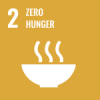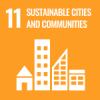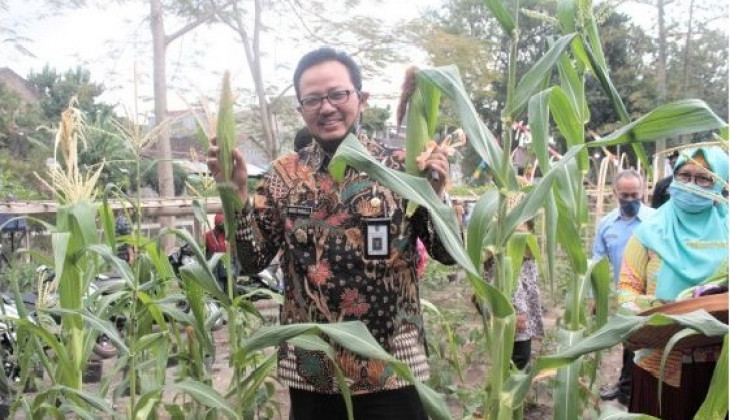Markisa Blunyahrejo Village, Karangwaru, Tegalrejo, Yogyakarta developed urban farming. In a land area of 4,500 m2, the local community in Markisa Blunyahrejo Village established urban farming and cendol catfish cultivation as an economic source.
Not only vegetable crops such as mustard greens (dakota, caisim, pakcoy), Cosmos caudatus, kale, spinach, and corn, the community of Markisa Village collaborated with Agrotechnology Innovation Center UGM also develop fruit and herbs.
Besides, this village also processes organic waste into catfish feed in its cendol catfish cultivation pond.
“Since February, we have prepared this empty land so that it can be planted, we have received vegetable seeds and planting material, and now we can harvest for the first time,” said drh. Pratita, Chairman of the Rukun Kampung Blunyahrejo, Tuesday (4/8) during the first harvest.
Pratita explained that being located on Buntung Riverbanks, this location was used as a productive agricultural land and a symbol of forming an Environmentally Integrated Urban Agricultural System. He hopes that this effort can become large and independent agriculture so that it benefits the surrounding community.
Vice Mayor of Yogyakarta, Drs. Heroe Poerwadi, M.A., who also attended the first harvest event, gave his appreciation for the achievements of Markisa Village. According to him, the Urban Agricultural System can be developed in other places.
“First, a Master Plan will soon be made on how Blunyahrejo can become an integrated area, starting from agriculture, animal husbandry, economy, education, as well as arts and culture,” he said.
He hopes that this model can be replicated throughout Yogyakarta city so that Yogyakarta can become independent of vegetables. Besides, in its development, the “Jajah Kampung” tour package model can be developed in collaboration with hotels around Yogyakarta; thus, tourists can enter the villages in the city.
“I hope that everyone will remain diligent and serious and realize the urban environment for food security, especially in an outbreak like this,” he said.
Dr. Ir. Taryono, M.Sc, Head of Agrotechnology Innovation Center UGM, said that the population growth and urbanization that are difficult to control had converted agricultural land in urban areas into industrial, commercial, and residential areas. This conversion of functions is increasing, which results in reduced agricultural land and a threat to food security in urban areas.
This condition encourages the government and community in urban areas to try to fulfill their food needs independently and improve environmental conditions to create a healthy and quality environment. One of the phenomena raised among the community is urban agriculture by exploiting limited land.
“This urban farming is one of the keys to the development of a sustainable urban food system. If appropriately designed, it can solve the problem of food insecurity”, he said.
According to Taryono, urban farming is not only in the field of horticultural crops. This agriculture can also be integrated with the cultivation of freshwater fish, animal husbandry, or other sectors through yards, empty land to increase nutrition and improve the economy and family welfare.
Field Coordinator for Agriculture, Rahmi Sri Sayekti S.P., M.Sc, added that the cooperation in urban farming development was marked by the provision and distribution of vegetable seeds and planting media assistance by Agrotechnology Innovation Center UGM last June. UGM has a mission to implement innovative technology that is beneficial to the community, government, private sector, and academics, as well as to support the formation of an integrated urban farming system in Yogyakarta.
“Markisa Blunyahrejo Village is a pilot project for Agrotechnology Innovation Center UGM for the vegetable bank program. We provide assistance starting from planting, harvesting, to further marketing of vegetables produced by the local community”, he added.
Source: https://ugm.ac.id/id/berita/19845-piat-dukung-pertanian-perkotaan-di-yogyakarta



